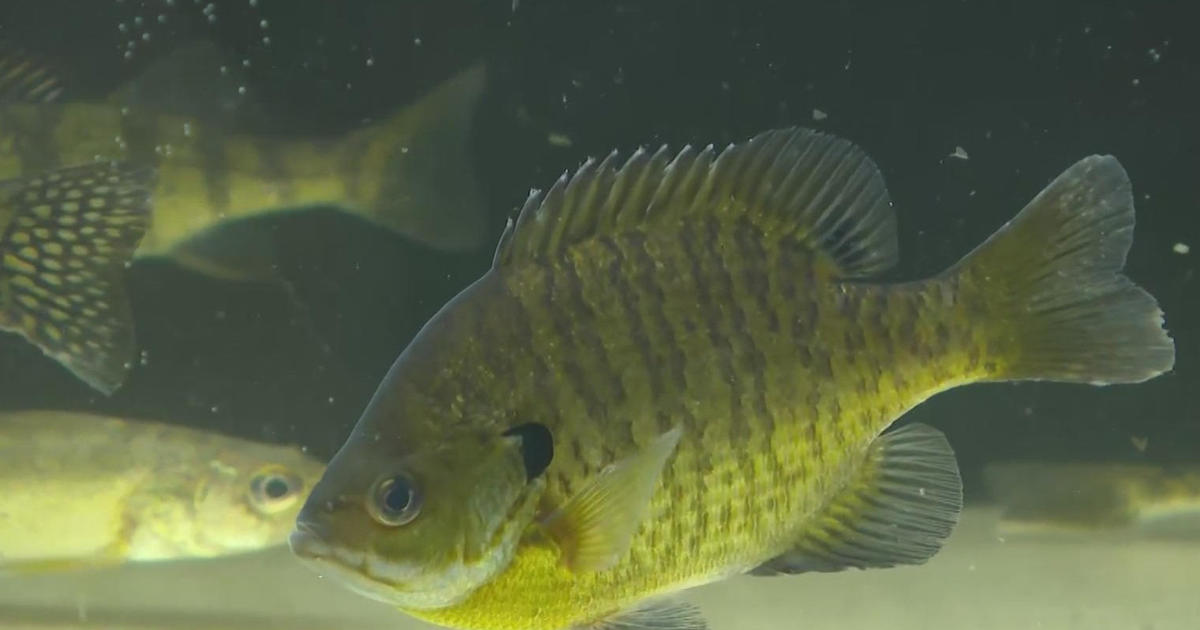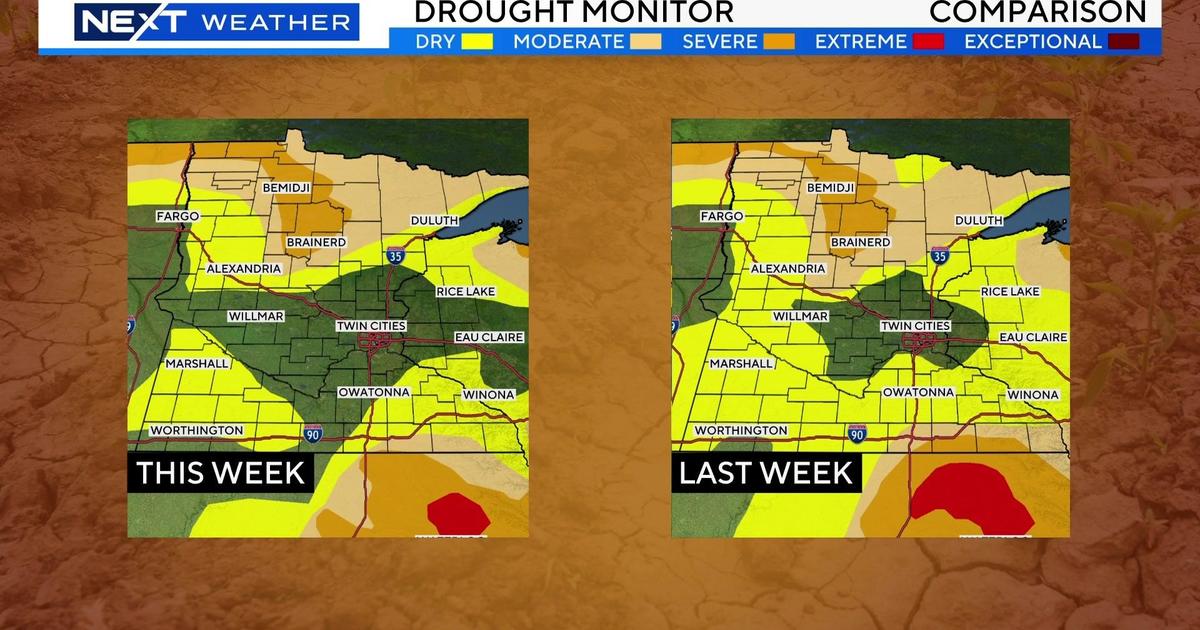Heat Wave Takes A Toll On Upper Midwest Fish
MINNEAPOLIS (AP) — This summer's heat wave is taking its toll on fish in the Upper Midwest, where high water temperatures and low oxygen levels have combined to kill thousands of fish in Minnesota, the Dakotas and Wisconsin.
Temperatures that cracked the 100-degree mark last week killed thousands of northern pike in several shallow southern Minnesota lakes. Large numbers of the fish also have died in shallow Wisconsin lakes, and in the James River in southeast North Dakota and northeast South Dakota this past week. Northern pike are vulnerable because they're better suited to cooler temperatures and can't seek refuge in the depths when lakes and streams are less than 6 to 8 feet deep.
While nobody has tried to keep an exact count of how many fish or lakes and streams have been affected — and the region's most popular fishing lakes have been spared — officials warned that Minnesota is likely to see additional die-offs as the summer progresses. Lakes farther north in Minnesota and other species of fish also could be affected if the heat persists, fisheries managers with the Department of Natural Resources said.
While the region is experiencing something of a respite, temperatures in the high 80s and 90s are still common across the region and long-range forecasts say above-normal temperatures are likely for at least the next couple weeks.
That means the conditions that caused the recent die-offs in Geneva Lake and Fountain Lake in the Albert Lea area and other parts of southern Minnesota could spread.
"These things are going to occur," said Henry Drewes, the DNR's regional fisheries manager for northwestern Minnesota in Bemidji, where he said some area lakes have already seen water temperatures in the mid-80s. "There are going to be more fish kills reported in the weeks ahead."
Fish kills are nothing new in warm summers, said Jack Lauer, the Minnesota DNR's regional fisheries manager in the southern city of New Ulm, who estimates that around 10 to 15 lakes across his territory have been affected. He said predicting which lakes might be affected is difficult but that the most vulnerable lakes tend to be shallow — less than 7 feet deep.
Warm water naturally holds less oxygen. Lauer said high algae levels common in summer also deplete dissolved oxygen supplies and so does competition from hardier carp and bullheads.
Fortunately, enough fish usually survive the summer die-offs to repopulate affected lakes, he said.
Drewes said he wouldn't be surprised to see die-offs of ciscoes (also known as tulibees), whitefish and suckers later this summer in his area. Those fish are sensitive to temperatures and oxygen levels, too.
Biologists and anglers in the region worry more about winter fish kills, which happen much more often than summer die-offs. Oxygen available for fish is limited when snowfall blocks light into the lakes, preventing photosynthesis. Plants die and stop giving off oxygen, and then the plants consume oxygen as they decompose.
In Wisconsin, DNR fisheries biologist Ryan Koenigs said his department started seeing mostly bigger northern pike dying on shallow southern lakes that had water temperatures in the upper 80s and 90s late last week. The La Crosse River Marsh also saw a significant die-off.
State officials also have seen dead carp, yellow perch, bluegills, largemouth bass and gizzard shad, he said. Some of the dead fish could be attributable to blue-green algae but the water temperature was the biggest factor, he said.
Those kills are not expected to have an impact on the overall populations but will likely affect the 26-inch and bigger adult northern pike prized by anglers. Most of the fish that died in Wisconsin were bigger than 20 inches and some were bigger than 40 inches, Koenigs said.
"It's just kind of sad to see these large northern pike dead. These fish are probably 15 years old, if not older," he said.
The die-off of northern pike between 2 pounds and 10 pounds in the James River came as a particular disappointment to North Dakota Game and Fish Department fisheries chief Greg Power, who said the James had been above flood stage for the past three years, creating ideal spawning conditions. But the river now is only about 8 feet deep in spots, which prevents the fish from diving to cooler water, he said.
"We had never had so many pike in the James River," Power said. "Unfortunately, thousands died this year and the guys are still trying to figure out how many."
High water the past few years across North Dakota has created ideal habitat, allowing most other species to thrive despite the hot weather.
A significant die-off of carp has been reported at Roy and Clear lakes in northeast South Dakota, said John Lott, fisheries chief for South Dakota Department of Game, Fish & Parks. But Lott said biologists suspect disease, not heat.
"It's most likely a species-specific kill," Lott said. "We assume it's associated with a virus carp are known to have."
The problem isn't confined just to the Midwest. In Delaware, environmental officials blamed the deaths of thousands of fish on low oxygen levels caused by the hot weather. The Fourth of July fish kill at Silver Lake in the city of Rehoboth Beach involved an estimated 5,000 to 6,000 gizzard shad and more than 1,000 white perch, as well as bluegills and largemouth bass.
In Knoxville, Tenn., local officials suspect the heat was to blame for the deaths of an estimated 10,000 or more small bluegills in one lake early this month, though Frank Fiss, assistant chief of fisheries for the Tennessee Wildlife Resources Agency, said Thursday he wasn't aware of any fish kills.
(© Copyright 2012 The Associated Press. All Rights Reserved. This material may not be published, broadcast, rewritten or redistributed.)



